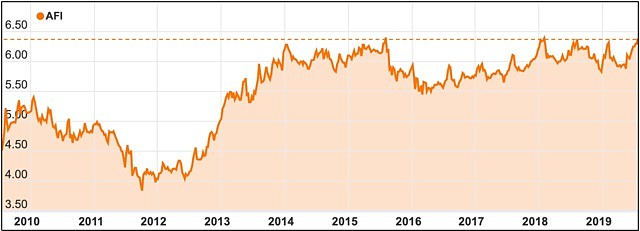Deeming rate cuts disappoint pensioners

The deeming rate for large investments has been cut from 3.25% to 3% and for smaller investments 1.75% down to 1%, backdated to the start of July.
It has been a controversial decision but the Morrison Government has now reduced the pensioner deeming rates a little and has given no indication that it will move any further on the issue.
That leaves pensioners – and particularly part-pensioners – in a fairly difficult space.
If they achieve a return less than the new deeming rates of 1% for assets under $51,800 and 3% for those above that amount, they are effectively getting an unwarranted cut in their part pension which is paid every fortnight.
Shooting for a higher rate can be a winning strategy
However, because deeming rates are the “assumed’’ rate of return on all pensioner investment assets, if individuals or couples achieve a rate higher than the deeming rate, they not only get to keep their part pension but keep the extra return as well.
There are at least six ways to equal or beat the part pensioner deeming rate but most of them are not risk free.
And with official interest rates at just 1% there is very little scope for beating the 3% higher deeming rate with no risk, although the lower rate of 1% could be beaten by some well-chosen term deposits or by using promotional or conditional cash deposit accounts.
While pensioner groups have vowed to keep fighting the government until they get some more action, I think there is a lot more to be achieved by planning to be in that select group of part-pensioners who beat the government at their own game as well as campaigning for change.
Try to beat the lower deeming rate first
One obvious strategy that the new deeming changes suggest is to try to beat the lower deeming rate by as much as you possibly can.
As I have suggested, that means hunting out the best possibly cash deposit or term deposit rates that are above 1%.
Obviously, everybody needs to set aside enough money for emergencies so using this strategy you would have your emergency fund invested at call at the highest possible rate and attached to a savings account so it can be accessed quickly if needed.
One example I used last time is the conditional ING savings maximiser which is still offering a total of 2.3% including a bonus rate but only if you deposit $1,000 a month into a personal account and make five or more transactions a month.
Many other credit unions, building societies and banks have similar products with either conditions or a promotional period that comes to an end.
With a bit of hunting around on comparison websites such as Canstar or Finder or by asking your current financial institution for their very best rate, it should be possible to easily outperform the lower deeming rate.
How to beat the upper deeming rate of 3%
We covered some of the investments that could beat this rate last week here but with the latest changes, there are a few extra ways of tweaking the system to come out in your favour.
One is to work out how much is needed to be kept on deposit for emergencies and then start to invest the amount above that to get even higher returns – and the accompanying higher risks.
Say, for example, a single pensioner decided they need $30,000 in their at call/savings account hopefully earning something above 2%. The remaining $21,800 which remains under the $51,800 cap can then be employed earning hopefully even higher returns on the share market.
Let’s use the listed investment company Australian Foundation Investment Company (ASX: AFI) as an example of how this would work.
Higher annual returns over a long period
Over the past 10 years AFI has generated a total return (dividends plus capital growth) of 10.1% a year and over the shorter time of five years 6.4% a year.

Australian Foundation Investment Company’s share price performance over the past 10 years.
This also shows that average total returns have started to fall a little in more recent years but have remained healthy, despite the odd poor year.
At the moment, AFI has a trailing dividend yield of 3.78%.
Yield alone should outperform the deeming rate
Taking the yield alone – which is obviously subject to some uncertainty because it will be paid in the future – the $21,800 would comfortably outperform the lower deeming rate by 2.78% and even outperform the higher deeming rate by 0.78%.
Over time, the stock should also generate capital gains as well but for the purpose of this exercise, we can see that it has beaten both deeming rates with a small degree of extra performance as well.
By coupling some of the money under the $51,800 limit and the rest that is above that limit, the pensioner is increasing their chance of soundly beating both deeming rates than if they only used assets above the $51,800 limit.
With higher returns come higher risks
As noted before, this strategy has risks – dividends could fall, share market prices could decline too – but on the face of it, the share market approach at least gives the part-pensioner a fighting chance to beat both deeming rates.
That is particularly the case if they have the ability to ride through share market ups and downs and just concentrate on the dividends as a way of hopefully outperforming the deeming rate and maximising their income.
Obviously, the more of the part pensioner’s money below the $51,800 level that is earning higher returns, the better this strategy should work to outperform both deeming rates.
However, individuals must ensure that they have an adequate emergency fund for any eventualities and also that they can live with the extra risk that comes with a share market investment – even one as diversified and as well run as Australian Foundation.
